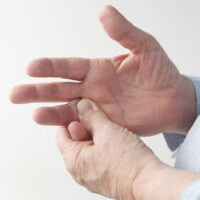7 common mistakes to avoid when using foot massagers

Nothing beats the relief one gets from using a foot massager after a long, tiring day. Even a short massage session with it can rejuvenate aching muscles. But things can quickly go wrong if the massager is not used properly. A small mistake while using the massager can damage it and put the user at risk. To avoid this, it helps to be aware of the common mistakes people make when using a foot massager.
1. Not reading the user manual of the foot massager
Never skip going through the manual that comes in the box. Not reading through it means missing out on important instructions on using the massager properly. Aside from this, the manual has all the information on maintaining the massager to last longer. Along with reading the instructions, users should also go through the precautions listed in the manual to avoid accidents.
2. Spilling liquids on the massager
Many people think having a beverage in hand while using a foot massager is a good idea. After all, sipping on a favorite tea or drink while massaging aching muscles and tissues can be quite relaxing. But this can turn out to be a grave mistake. One may accidentally spill liquid on the massager. This will not only cause damage to internal parts of the massager but can also create the risk of electrical hazards.
3. Using too much pressure
It seems logical that the more pressure put on the aching tissues, the more effective it is at relieving pain. However, applying too much can only cause discomfort and even injury. Always use steady and gentle pressure while using the foot massager. After all, the purpose of the massager is to alleviate the pain instead of aggravating it.
4. Forgetting to adjust the speeds
Most electric foot massagers come with settings for multiple speeds. The different settings are for adjusting the intensity of pressure on the muscles and tissues. For example, softer tissues in the calf require pressure at lower speeds to prevent any injury. On the other hand, harder tissues on the heel of the foot may need slightly higher speed for quicker relief. Therefore, trying out and adjusting the speeds while using the massager is important.
5. Focusing on one area for too long
When the pain is of high intensity, focusing on the single point of tension usually feels good. So, one puts pressure on that point with the massager for too long. But this can overstimulate the muscle and cause discomfort. Sometimes, bruising may also occur. So, always move around the massager over the muscles near the point of tension.
6. Neglecting to use the correct attachment
Many foot massagers often have multiple attachments in the box. Each has its own purpose. For example, there might be a ball attachment for large muscle groups or a pointed-tip attachment for acupressure points. It is important to use the correct attachment every time to avoid discomfort or the risk of injury.
7. Storing the foot massager incorrectly
Foot massagers come with their own box or covers. These protect the machine from dust, humidity, and extreme temperatures. Not storing the massager in this way can cause damage. Thus, one may not be able to use it for a long time.





